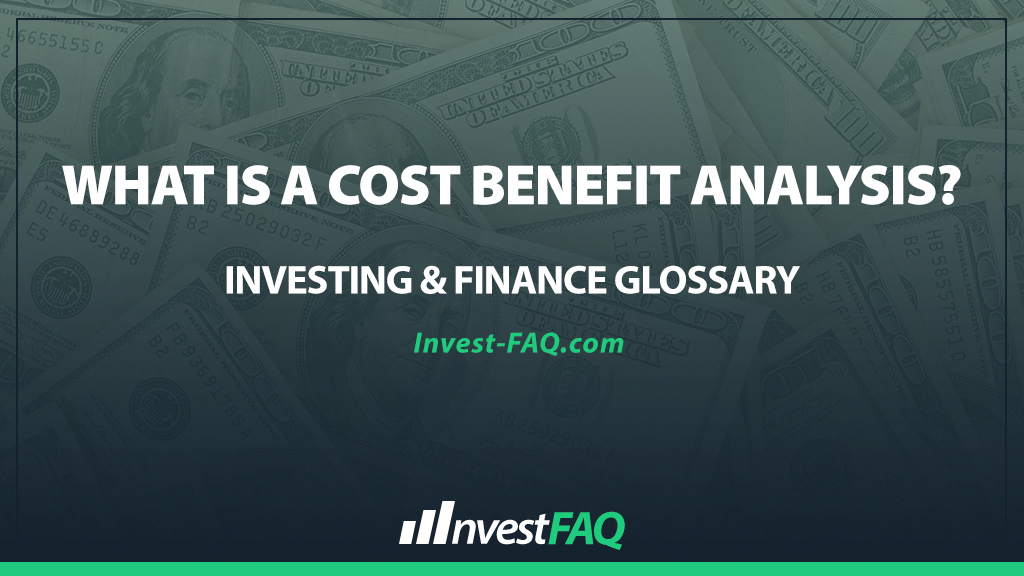
Cost-Benefit Analysis
Contents
A cost-benefit analysis (CBA) is a systematic approach to estimating the strengths and weaknesses of alternatives used to determine the options that provide the best approach to achieve benefits while preserving savings. It involves comparing the total expected cost of each option against the total expected benefits, to see whether the benefits outweigh the costs, and by how much.
In the business context, a cost-benefit analysis is used across various scenarios, from new projects and investment decisions to operational changes and policy implementations.
It helps businesses in making informed decisions by quantifying and comparing the value of all relevant costs and benefits of a project or decision, not just the financial ones, but also non-financial factors that affect the business and its stakeholders.
Example of a Cost-Benefit Analysis
Imagine “ABC Manufacturing” is considering upgrading its manufacturing equipment. The new equipment costs $500,000, but it’s expected to reduce production costs by $150,000 annually due to improved efficiency and lower maintenance costs. The expected life of the equipment is 5 years.
The cost-benefit analysis would involve calculating the net present value (NPV) of the investment, considering the initial cost, annual savings, and the time value of money.
In this scenario, the cost-benefit analysis starts with the initial investment of $500,000. The benefits, or cost savings, amount to $150,000 annually over 5 years.
Assuming a discount rate of 5%, the NPV of these savings can be calculated to determine if the benefits outweigh the costs. If the NPV is positive, it means the investment is worthwhile from a financial perspective. This analysis helps ABC Manufacturing make an evidence-based decision on whether to proceed with purchasing the new equipment.
Types and Uses in Business Scenarios
Cost-benefit analyses are versatile and can be applied in various business scenarios, including:
Project Management: To decide between project alternatives based on their expected net benefit.
Capital Budgeting: To evaluate investment proposals and choose the ones that maximize value.
Policy Making: To assess the economic impact of business policies and regulations.
Operational Efficiency: To determine the feasibility of initiatives aimed at reducing costs or improving productivity.
The CBA provides a basis for comparing projects or decisions that may have a wide variety of outcomes and impacts, financial and otherwise, making it an essential tool for strategic planning and decision-making.
Significance for Investing & Finance
The significance of cost-benefit analysis in accounting lies in its ability to provide a quantitative foundation for complex business decisions. It complements traditional accounting measures by considering both the direct financial impacts of decisions and their broader effects on the company’s operations, competitiveness, and stakeholder value.
Furthermore, CBA helps in aligning business strategies with financial objectives, ensuring that investments and projects undertaken are not only viable but also contribute to the long-term sustainability and growth of the business.
In summary, a cost-benefit analysis is a critical analytical tool in business and accounting, enabling organizations to evaluate the economic feasibility and impact of their decisions.
By systematically comparing the costs and benefits of alternatives, companies can make decisions that optimize resource allocation, enhance profitability, and achieve strategic goals.
FAQ
How does a cost-benefit analysis differ from a simple budget forecast?
A cost-benefit analysis evaluates both the costs and benefits of a decision or project, including non-financial factors, to determine its overall value, while a budget forecast focuses primarily on the financial aspects, estimating future income and expenditures.
Can non-financial benefits be quantified in a cost-benefit analysis?
Yes, non-financial benefits can be quantified in a cost-benefit analysis by assigning monetary values to intangible benefits, such as customer satisfaction or environmental impact, using various estimation techniques to ensure a comprehensive evaluation.
Why is the discount rate important in a cost-benefit analysis?
The discount rate is crucial in a cost-benefit analysis because it accounts for the time value of money, allowing for the comparison of costs and benefits occurring at different times by calculating their present value, thereby ensuring a more accurate assessment of a project’s net benefit.
What role does a cost-benefit analysis play in public policy decision-making?
In public policy decision-making, a cost-benefit analysis provides an objective framework for evaluating the economic, social, and environmental impacts of proposed policies or regulations, helping policymakers to choose options that offer the greatest benefit to society relative to their costs.
